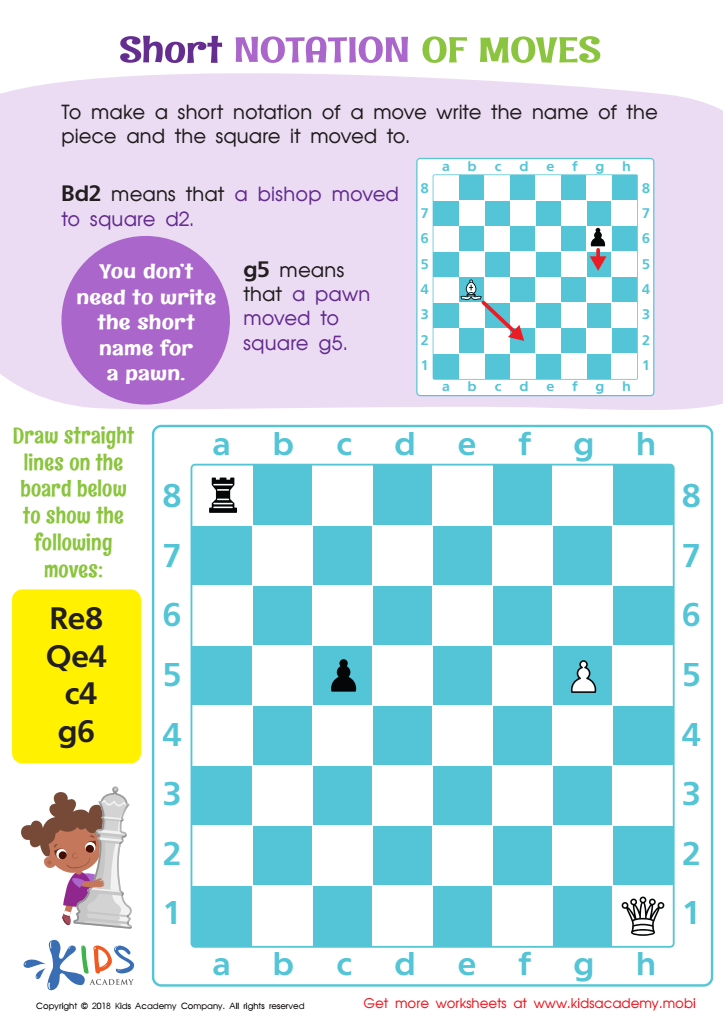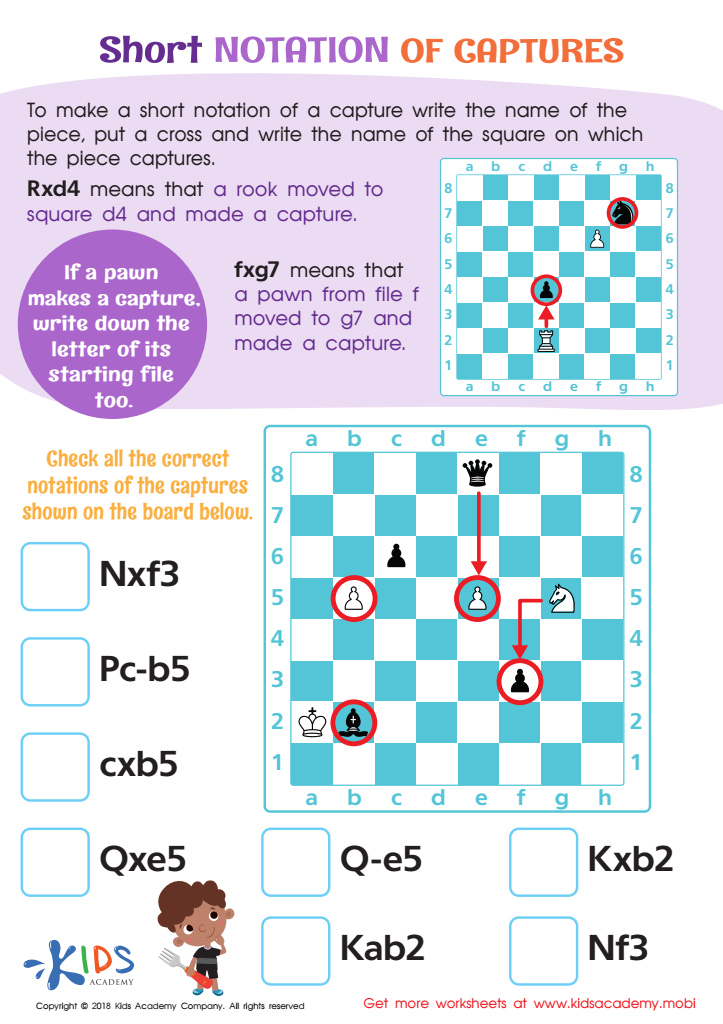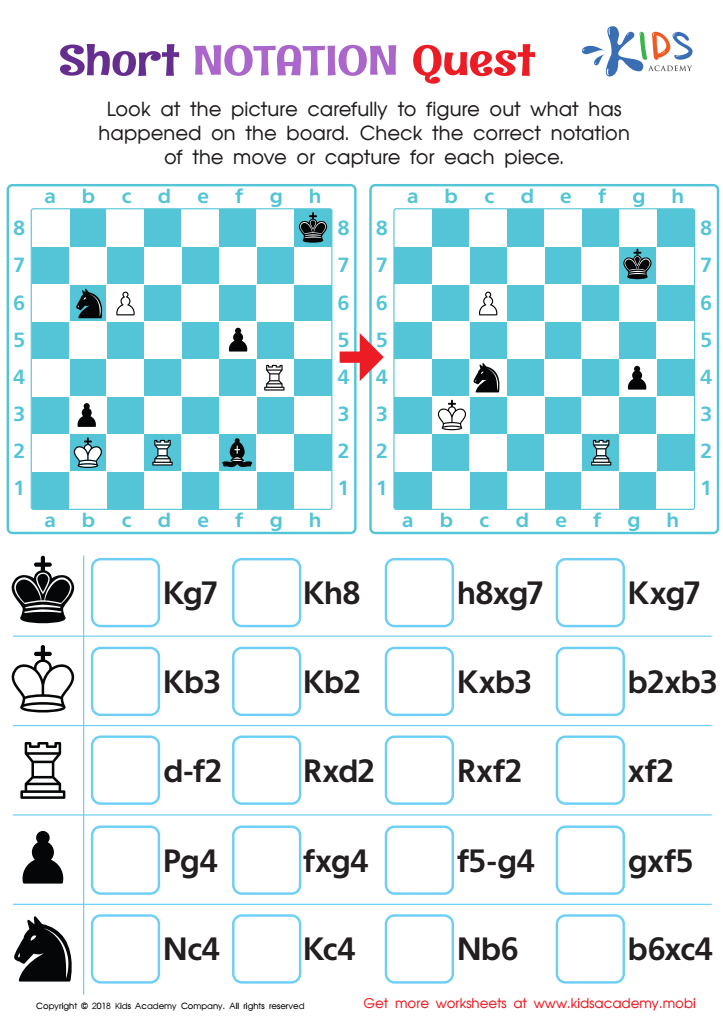Abbreviated Chess Notation - Lesson for Preschool, Chapter - Pieces - How They Move and Capture
In the "Abbreviated Chess Notation" lesson, young learners embark on an exciting journey to understand the fundamental language of chess. This lesson is a crucial part of the GAME BASICS unit, specifically tailored to preschool-grade students, focusing on "Pieces - How They Move and Capture." Through engaging activities such as Short Chess Notation, Short Notation of Moves Worksheet, Short Notation of Captures Worksheet, and Short Notation Quest Worksheet, students will unlock the ability to record and interpret chess moves efficiently.
Why is this important? Learning abbreviated chess notation at a young age equips students with a valuable skill set that enhances their analytical thinking, memory, and decision-making abilities. It allows them to understand games played by others, share their own game experiences, and even study strategies from famous chess matches. Moreover, mastering this notation system encourages a deeper connection with the game, fostering patience, concentration, and strategic planning. As students navigate through this lesson, they're not just learning about chess; they're also developing critical life skills that will benefit them beyond the chessboard.

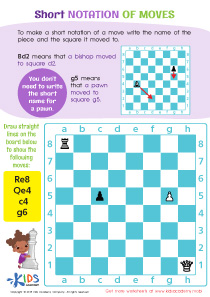
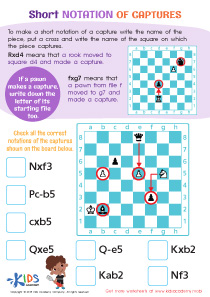
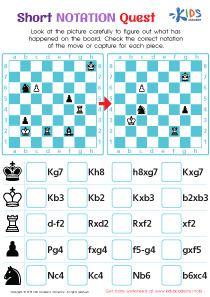
-
Activity 1 / Short Chess Notation
-
Activity 2 / Short Notation of Moves Worksheet
Being a master at the game of chess requires much more than knowing the names of all the chess pieces, and knowing their moves as well. A good chess player must also know how to make notations of their moves during the game. To make a short notation of a move, a player must write the name of the piece and the square it moved to. For example, Bd2 means that a bishop moved to square d2. For pawns, however, players don’t need to write the short names. That is; g5 shows that a pawn moved to square g5. Ask your kids to draw straight lines to the board showing the moves given in the printout.
-
Activity 3 / Short Notation of Captures Worksheet
Teach your students some chess skills with this simple worksheet. In the exercise, they will be learning about short notation of captures. To make a short notation of a capture, the player must write the name of the piece, put a cross, and write the name of the square on which the piece captures. For example, the notation Rxd4 means that a rook moved to square d4 and made a capture. However, if a pawn makes a capture, write down the letter of its starting file too. That is; fxg7 would mean that a pawn moved from file 7 to g7 and made a capture. Help your students check the correct notations of the captures on the board.
-
Activity 4 / Short Notation Quest Worksheet
If your kids have an interest in chess playing, you can use this worksheet to teach them more about short notation in a game of chess. Playing chess requires more than just skilled movements and clever strategising. Players must also know how to make notations of their moves. Ask your kids to look carefully at the picture in the printout, and figure out what has happened on the board. Help them check the correct notation of the move or capture for each piece.
